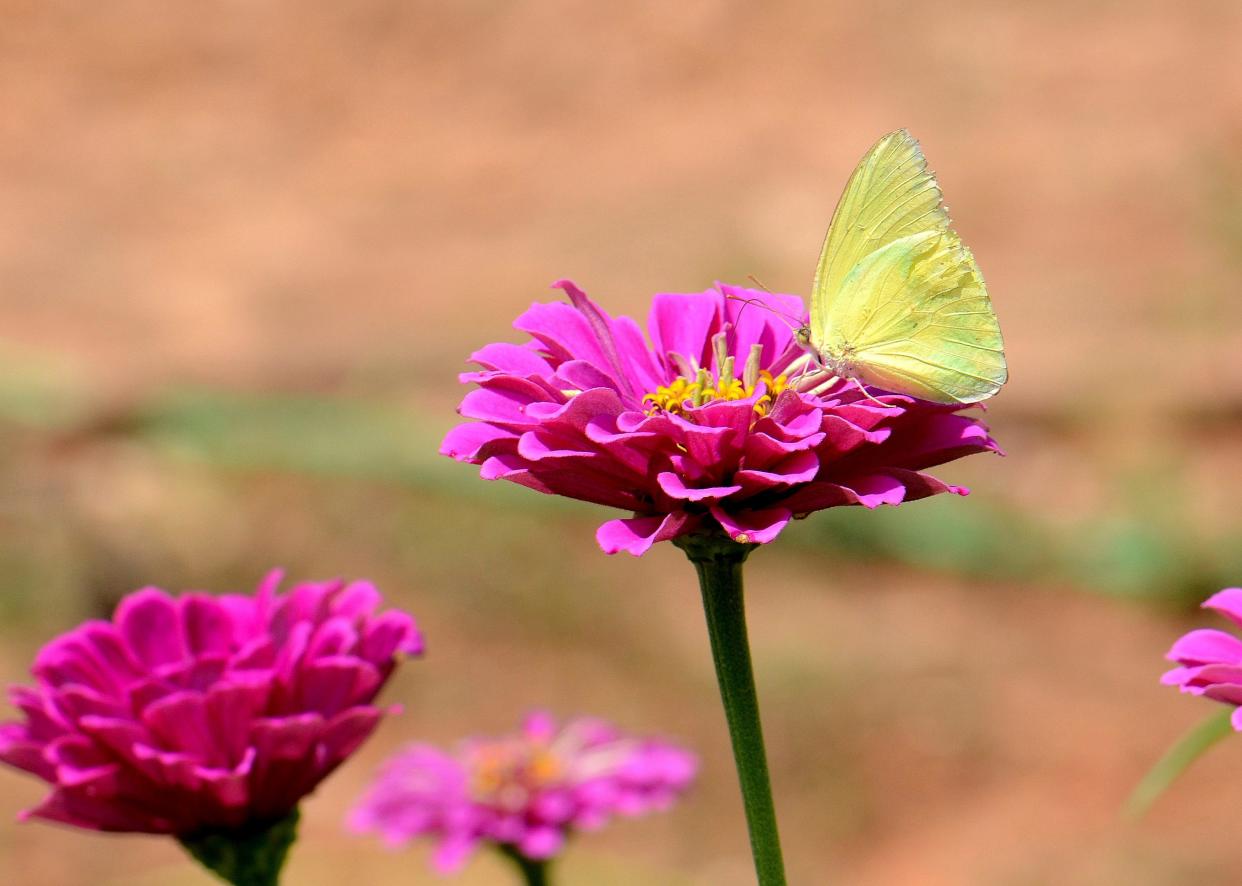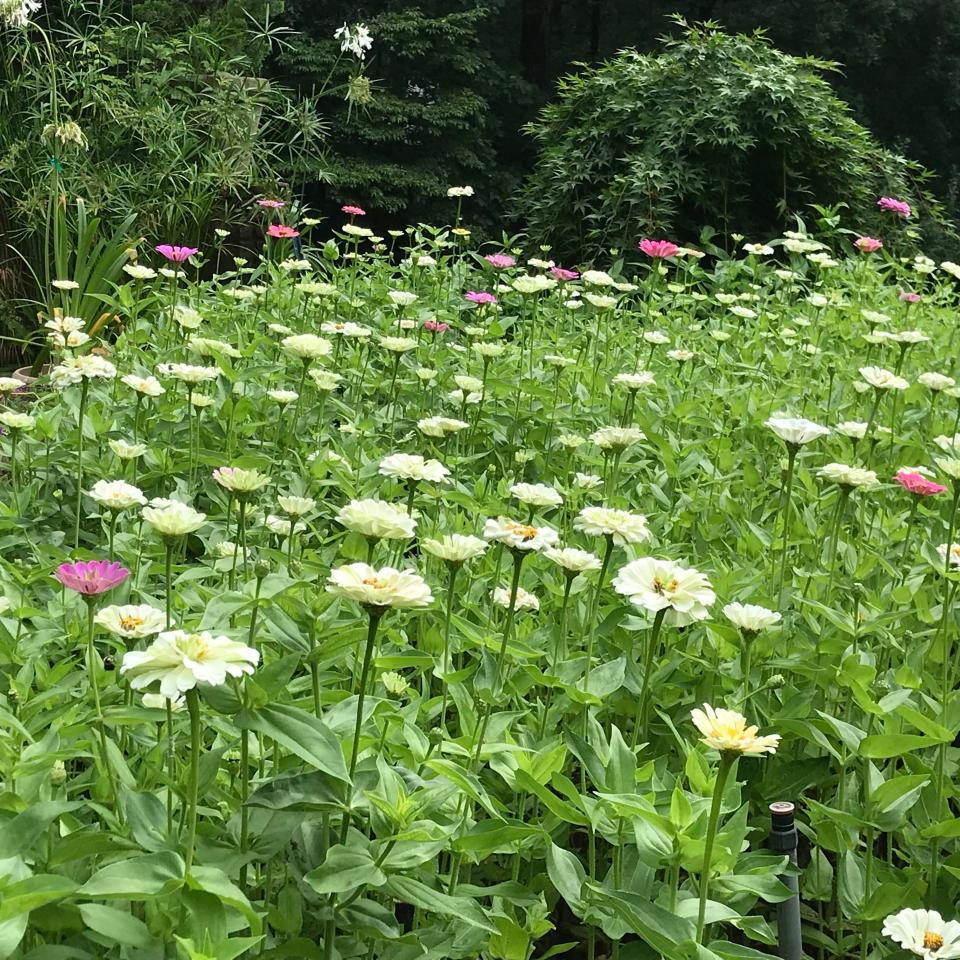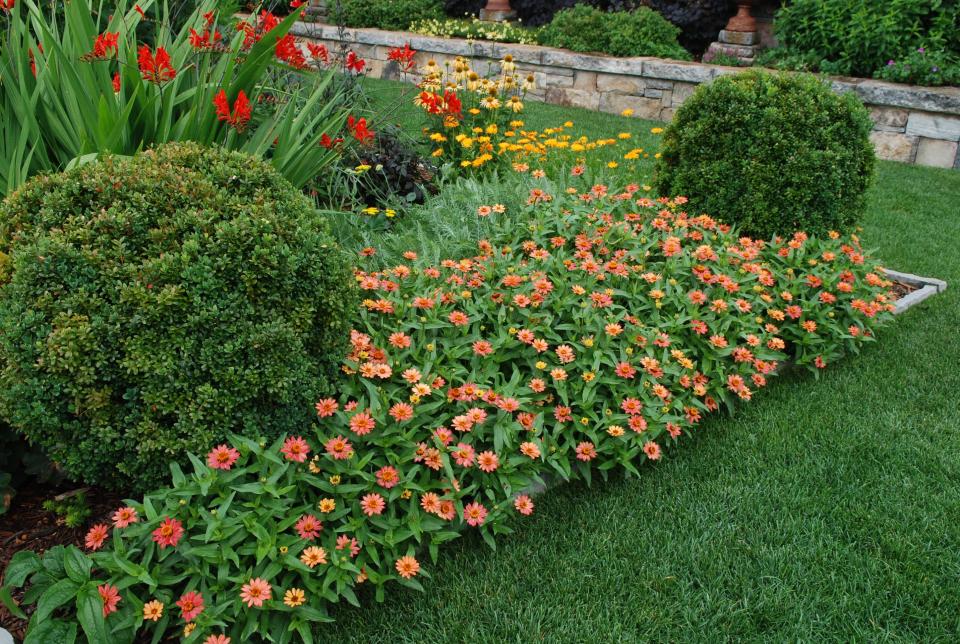Betty Montgomery: Meet Zinnias, the friendliest flowers

In the movie “You’ve Got Mail”, Megan Ryan describes daisies to Tom Hanks: “I love daisies. They’re so friendly. Don’t you think daisies are the friendliest flower?” Well, Zinnias need to be added to the list of friendliest flowers. They are bright, cheerful, easy to grow and you know it is summer time when you see them. As a child, I remember walking down to the grocery store and seeing buckets of zinnias for sale. Then after I was married, I loved going to the Farmers Market and seeing Mrs. McAbee selling zinnias in her stall. What a wonderful memory.
Zinnias are a very popular bedding plant because they bloom with abandon and require only minimal care. They are native to Mexico and comes in a variety of different sizes and shapes. Zinnias rang in height from 8-inch mounds to somewhere between 3- to 4-foot-tall bushes. They come in a rainbow of colors and the flowers can be single, semi-double, or double, looking like a dahlia. Give them about a month from the time you plant the seeds and your garden will light up with a zing of colors if you choose a seed packet of mixed colors.
Betty's garden: Take an inside look at Betty Montgomery's 5-acre garden in northern Spartanburg County

Zinnias can be started in doors or sown directly where they are to grow. They can be easily sown between perennials or shrubs, where they can fill in during the times when perennials are not flowering as much, giving your garden a continuous array of color. Zinnias germinate and have a speedy growth and if you live where it is hot in the summer, they do just fine.
Hummingbird haven: Betty Montgomery: Make your garden a hummingbird hangout
Today there are All-American selections that are heat tolerant, have spreading compact foliage and 2-inch, mandarin, single flowers that bloom non-stop until frost if you dead-head them (remove the old flowers as they fade) along the way. There are a number of dwarf colors available, ‘Profusion cherry’, ‘Profusion apricot’, white and ‘Profusion Fire’ a two-tone red-yellow bicolor. These are usually for sale at most garden centers. Dwarf zinnias reach 8 to 10 inches in height at maturity and make a nice plant for the front of a border. They work well when interplanted with other annual and perennial flowers and shrubs.

Some of my favorite ones are the larger ones that look fantastic in flower arrangements. Zinnia elegans is a tall, upright type with wide, coarse leaves and large flowers. I usually plant a packet of these in a coral color or a bright red.
To keep your zinnias blooming, one of the most important steps in learning how to grow Zinnia, is to deadhead the blooms. Deadheading Zinnias, prolongs the plants blooming time, encouraging the flowers to continue to bloom. Once the blooms begin to fade, cutting back the Zinnia flower heads will promote new growth.
You can sow zinnia seeds directly in the garden any time a week after the final frost date. I sew mine the first or second week in June because I want them to be starting to bloom just as many of my perennials are taking a rest in the middle of the summer. You can also plant a few seeds early, then a couple of weeks later add some more seeds to a different area. This way, you will prolong your show of blooms. Plant in soil enriched with compost in a sunny area for the best results. You can also thin the plants if they come up too thick. Water well for the first two weeks to get them started.
If you are wanting to give the beginner gardener a win or teach children about growing plants from seed, Zinnias are a great choice. With large seeds that germinate quickly into sturdy plants, they are just what a beginner needs to get self-confidence. They are fairly quick to flower and are long-lasting and colorful.
Another winning trait about zinnias is the fact you can save seeds at the end of season and plant them the following summer. Just know that some varieties are hybrids and these will not typically come true to the parent plant but they will grow and flower. If you want a specific color, shape, size, etc. it is best to buy seeds.
To collect your own seeds, after a zinnia flower has dried, remove it from the plant and gently take the flower apart. The seeds are small and arrow-shaped. Some might still be attached to the base of the petal and you can gently pull the seeds loose from the base. If you let the flowers go to seed by themselves, you will probably have some seeds that will germinate and have a few plants.
If you are purchasing seeds and have a choice, be sure to choose some of the newer varieties which are more disease-resistant plus, they are grown to withstand the hot and humid summer climates. Good air circulation helps prevent the onset of fungal leaf diseases. And, another plus is that deer do not find this plant appetizing.
Remember, zinnias are easy to grow, come in a multitude of colors and they are very friendly flowers.

Betty Montgomery is a master gardener and author of “Hydrangeas: How To Grow, Cultivate & Enjoy,” and “A Four-Season Southern Garden.” She can be reached at bmontgomery40@gmail.com.
This article originally appeared on Herald-Journal: Meet Zinnias, the friendliest flowers

